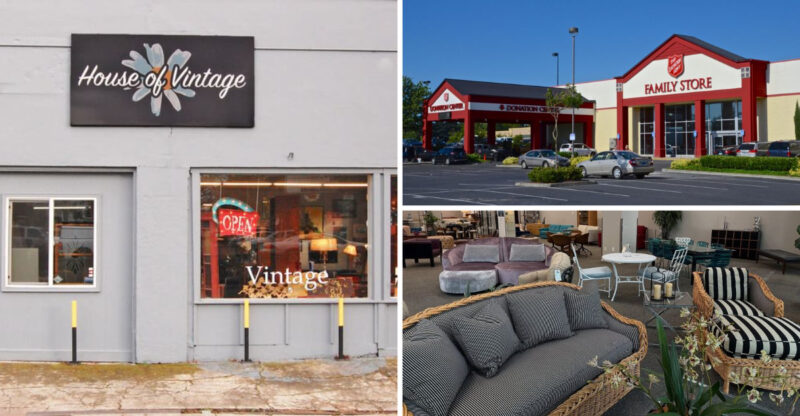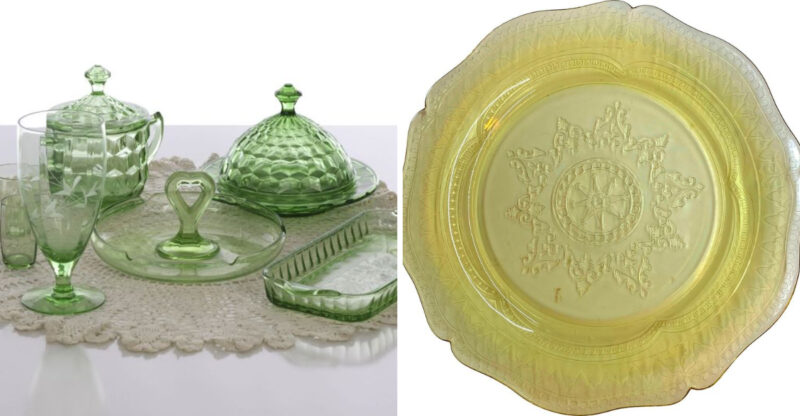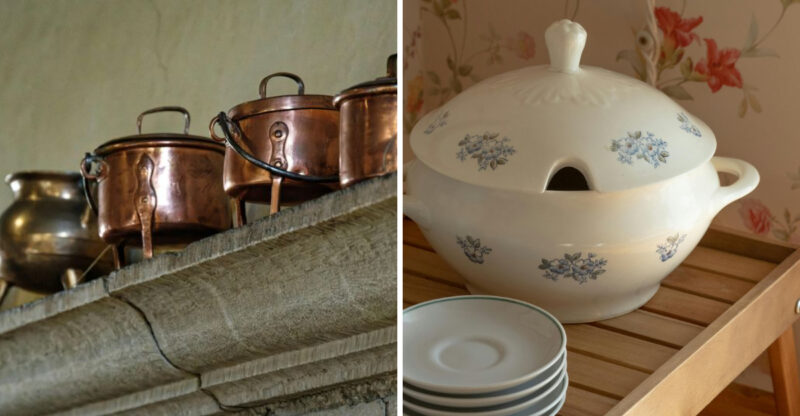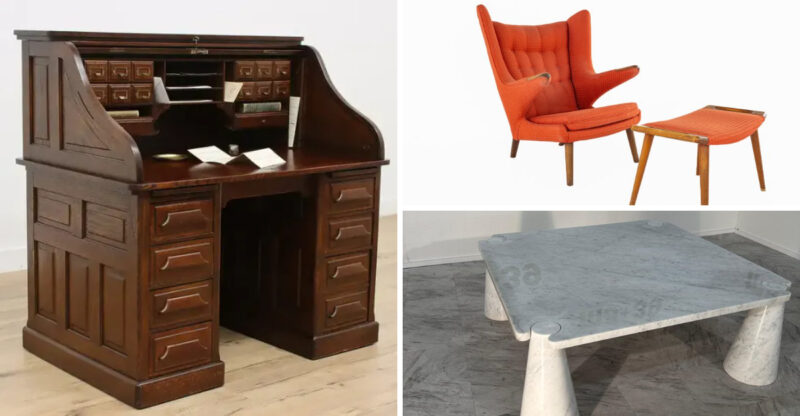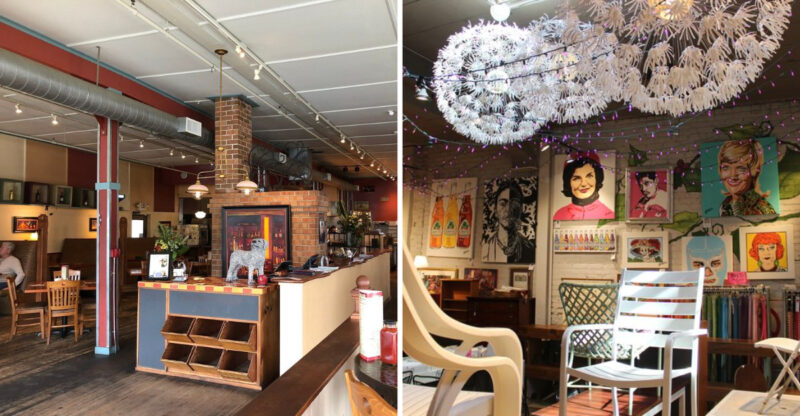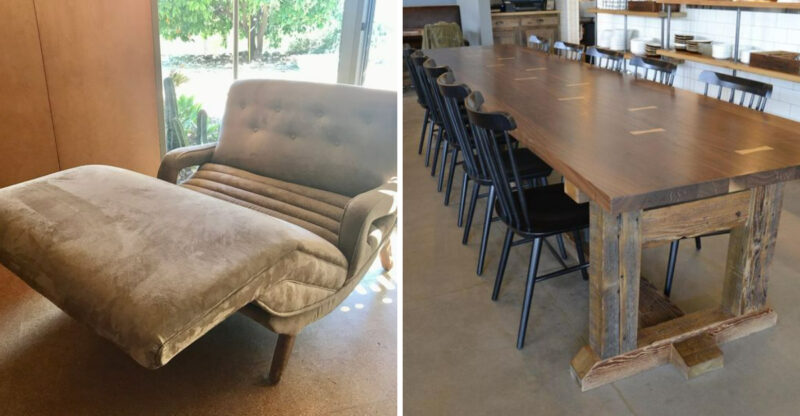How Many Of These Retro Home Items Do You Recognize?

Picture this…you walk into a cozy living room, and something about it instantly sparks a memory, a vibe that feels straight out of another decade. There’s a certain charm to the way homes used to be, filled with personality, bold choices, and items built to last.
Whether you grew up with them or just admire the vintage aesthetic, these familiar household features have a way of bringing the past right back to life.
Now, we’ll explore a collection of retro home items that just might jog your memory, or surprise you. Just keep in mind that the items mentioned reflect trends from past decades and may vary based on region and personal experience.
1. Glass Milk Bottles
Remember the days when fresh milk was delivered to your doorstep in glass bottles? These iconic milk containers evoke a simpler time, when the clinking sound of bottles marked the morning routine.
Glass milk bottles were not only practical but also eco-friendly, as they were reused countless times. Their sturdy design and clear glass showcased the creamy goodness inside, making every pour a delight.
Today, these bottles are cherished collectibles and often repurposed as charming vases or nostalgic décor pieces. They remind us of an era when life felt more connected and community-focused.
2. Mid-Century Modern Sideboard
Where did parents hide all their fancy dinnerware and special occasion items? These sleek wooden cabinets with their tapered legs and minimal hardware were the epitome of cool in the 1960s.
Mid-century sideboards typically featured a mix of closed storage and display shelving. The warm teak or walnut finish contrasted beautifully with the streamlined design that defined the era’s aesthetic.
Many homeowners still hunt for these pieces at estate sales, as their timeless design has made them highly collectible in today’s vintage-obsessed decorating world.
3. Shag Area Rug
How many hours did we spend lying on these ultra-plush floor coverings? The deep-pile carpet became a staple in 1970s living rooms, offering a cozy spot for playing board games or watching TV.
Shag rugs came in bold, sometimes psychedelic colors, harvest gold, burnt orange, and avocado green were particular favorites. Their long fibers would trap everything from pet hair to potato chips, making them a nightmare to vacuum.
Some households even used special rakes to keep their shag looking fresh and fluffy after heavy foot traffic had matted it down.
4. Rattan Or Wicker Furniture
This tropical-inspired seating took over sunrooms and patios during the 1970s and 80s! The woven texture added natural warmth to spaces long before the boho trend made its modern comeback.
Rattan chairs, peacock thrones, and egg-shaped hanging seats were particularly coveted pieces. They typically featured plush cushions in bold floral or geometric patterns that defined the era’s more-is-more aesthetic.
Despite being somewhat uncomfortable without cushions, these pieces brought an exotic flair to suburban homes, making everyone feel like they were on permanent vacation in their own living room.
5. Avocado Green Refrigerator
This unmistakable kitchen appliance color dominated the 1970s home! The muted, slightly muddy green shade replaced the clean whites of earlier decades, bringing earthy tones into the heart of the home.
Avocado refrigerators often paired with matching stoves, dishwashers, and even sinks to create a coordinated kitchen suite. Their chunky handles and boxy shapes were a far cry from today’s sleek stainless steel options.
Though considered hopelessly dated by the 1990s, these colorful appliances are now enjoying a nostalgic revival among vintage enthusiasts who appreciate their retro charm and surprising durability.
6. Harvest Gold Stove
If you didn’t have avocado green, chances are you had this golden-yellow cooking companion! The warm, somewhat mustardy shade adorned kitchens throughout the 1970s, often paired with brown or orange accents.
Harvest gold stoves featured chunky temperature dials and that distinctive analog clock in the center of the control panel. The coil burners would glow bright orange when heated, a visual indicator that’s disappeared in modern smooth-top ranges.
Many of these workhorses are still functioning in older homes today, testament to the quality manufacturing of the era, even if their color has long fallen out of fashion.
7. Pyrex Mixing Bowls With Patterns
Those colorful nesting bowls weren’t just for mixing! Grandma’s set likely featured bold patterns like Butterprint, Gooseberry, or Snowflake that have become highly collectible today.
Pyrex bowls seamlessly transitioned from prep work to serving to storage, making them incredibly practical kitchen workhorses. The thick glass construction could withstand hot and cold temperatures without breaking, a revolutionary feature when they were introduced.
Each pattern tells a story about American design trends, from the atomic starbursts of the 1950s to the more folksy patterns of the 1960s and bold geometrics of the 1970s.
8. Fondue Set
This party essential turned dinner into an interactive experience! The metal pot suspended over a small flame allowed guests to dip bread cubes into bubbling cheese or cook meat in hot oil.
Fondue sets typically came with color-coded long-handled forks so everyone could keep track of their dipped items. The ritual of gathering around the pot made for a communal dining experience that peaked in popularity during the 1960s and 70s.
Many sets came in bright orange, harvest gold, or avocado green to match the kitchen color schemes of the era, often collecting dust between special occasions.
9. Electric Percolator
Before fancy espresso machines, this bubbling coffee maker was the morning soundtrack in American homes! The clear glass knob on top allowed you to watch as the coffee darkened with each cycle through the metal basket.
Electric percolators produced a distinctive gurgling sound as water pushed up through the central tube. The shiny chrome or aluminum finish made it a countertop showpiece rather than an appliance to be hidden away.
Many families still swear this brewing method produces the richest, most aromatic coffee, despite being largely replaced by drip machines and pod systems in modern kitchens.
10. Hand-Crank Egg Beater
This manual kitchen tool required some muscle but delivered results! The satisfying mechanical action of turning the handle to spin the beaters was somehow both efficient and slightly hypnotic.
Hand-crank egg beaters featured sturdy metal construction with wooden or plastic handles. The gears made a distinctive whirring sound that announced someone was baking something delicious.
Many kitchens kept these tools even after electric mixers became common, as they were perfect for quick jobs when setting up the larger appliance seemed like too much effort.
11. Wall-Mounted Rotary Phone
Those long conversations with the cord stretched to its limit for privacy! Kitchen phones were typically mounted right on the wall, saving valuable counter space in the heart of the home.
Wall phones featured extra-long cords that inevitably became tangled into an impossible knot. The rotary dial made that distinctive clicking sound as your finger returned to position after each number.
Many homes had a small notepad and pencil hanging nearby for taking messages, long before voicemail or caller ID made communication so much less personal.
12. Macramé Plant Hangers
These knotted creations dangled from ceilings throughout the 1970s! The intricate woven patterns held pottery planters filled with spider plants, pothos, and other trailing greenery.
Macramé hangers were often handmade using natural jute or cotton cord in earth tones. The craft became so popular that macramé kits and classes were widely available, letting homemakers add a personal touch to their decor.
The bohemian look created a jungle-like atmosphere in living rooms and sunporches, bringing the outdoor feeling inside long before today’s houseplant obsession took root.
13. Wood Paneling
Those dark brown walls that made every room feel like a cabin in the woods! This ubiquitous wall covering transformed suburban homes across America during the 1960s and 70s.
Wood paneling came in sheets of composite material with a wood-grain finish, making installation relatively easy and affordable. The warm tones were meant to create a cozy atmosphere, but often resulted in dark, cave-like spaces by today’s standards.
Many homeowners later painted over these panels when decorating trends shifted toward lighter, brighter interiors. A renovation choice that continues to spark heated debates among design enthusiasts.
14. Lava Lamps
These hypnotic mood lights captivated teenagers for hours! The slow-moving colored blobs created an ever-changing display that perfectly captured the psychedelic vibe of the late 1960s and 70s.
Lava lamps featured glass cylinders filled with colored oil and wax illuminated from below. They required patience, taking nearly an hour to warm up before the wax began its mesmerizing dance.
Originally marketed as an executive desk accessory called the “Astro Lamp,” they quickly became associated with counterculture and groovy bedroom decor for the younger generation.
15. Avocado Bathroom Suite
Those matching green fixtures extended the earthy palette into the bathroom! Toilets, sinks, and tubs in this distinctive shade were the height of bathroom fashion in the 1970s.
Avocado bathroom suites were often paired with equally bold wallpaper featuring large floral patterns or geometric designs. The coordinated look extended to accessories like toilet seat covers, bath mats, and shower curtains in complementary colors.
While most homeowners have since replaced these colored fixtures with white, a few well-preserved examples have become sought-after by mid-century modern enthusiasts looking for authentic period bathrooms.
16. Bean Bag Chairs
These squishy seating options conformed to your body as you sank into them! Made from vinyl or fabric filled with polystyrene beads, they became the casual furniture choice for rec rooms and kids’ bedrooms.
Bean bag chairs came in bold colors and patterns, from bright primary colors to wild animal prints. They made a distinctive crunching sound when you moved, as the tiny beads shifted to accommodate your weight.
Though not known for their back support or ease of getting up gracefully, these informal seats perfectly captured the relaxed vibe of 1970s casual living spaces.

